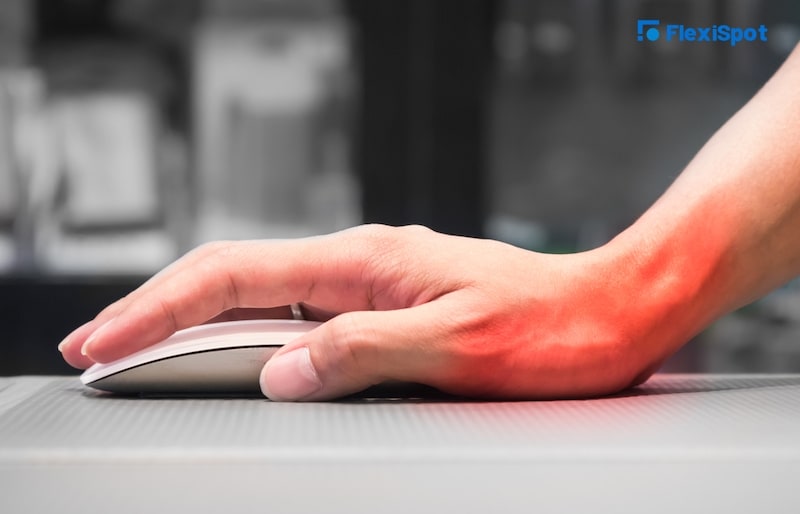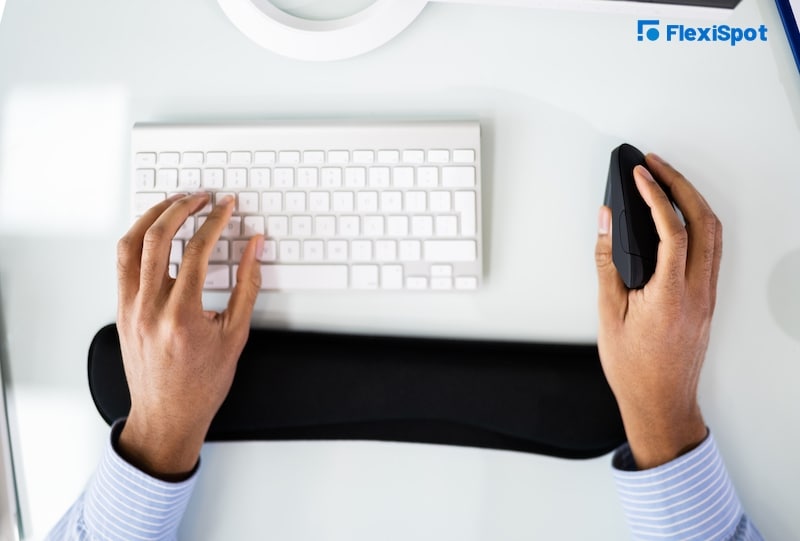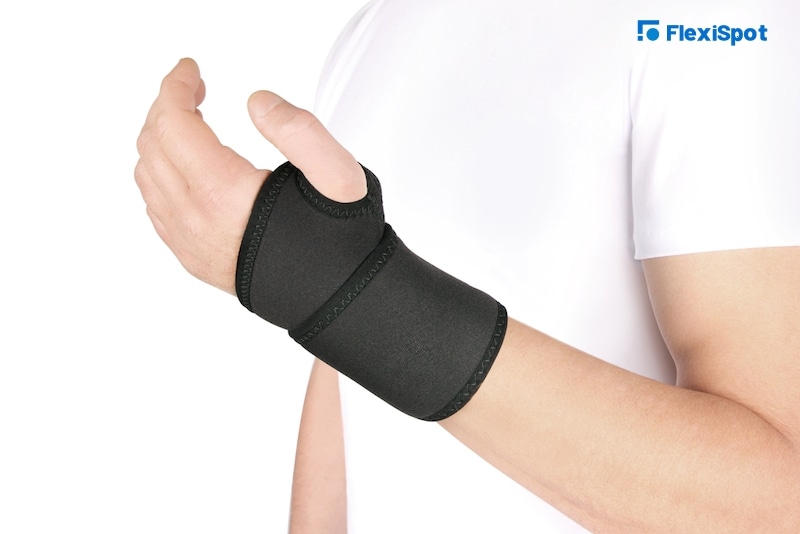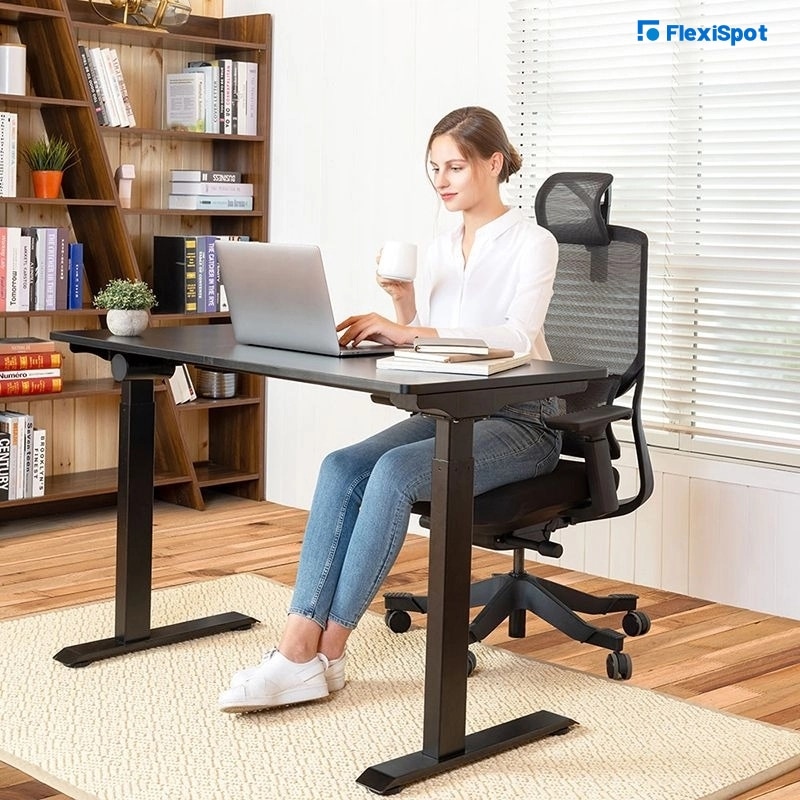If you spend a lot of time working on your computer and using a mouse, you’d know how annoying it can be for your wrist to start hurting. This is especially true when it’s the middle of the day and you still have a lot of work to do.
From all the emails you have to send out to the deadlines looming over you, you’d already be stressed out with all your work, and adding physical pain to the mix is not fun at all.
Particularly when that pain occurs in your hands. Though physical pain is annoying at best, it doesn’t necessarily have to interfere with your work. For example, knee pain is a frequent concern for office workers from having to stay seated all day long, but this doesn’t stop you from working.
Wrist pain is a different story – all your work depends on your hands, as do most of your daily activities. This makes it very hard to deal with and can add a lot of unnecessary stress.
Office work remains tough, but using a mouse doesn’t have to be.
Why Does Using a Mouse Give You Wrist Pain?
Grip
There are three common mouse grip styles, and most people have one of these three. You may not know this – since most people don’t – but your grip style can actually affect how much your wrist hurts while you hold the mouse, if at all.
The palm grip is when most of your palm – and your fingers – are in contact with the mouse. This is where you latch onto the mouse, in a way similar to when you’re holding a doorknob. This position is comfortable for when your hand is simply resting on the mouse, but it means that your movements become slow.
Claw grip, on the other hand, will make your hand arch more. Only your fingertips and some part of your palm will come in contact with it. Because your hand’s weight is kept off the mouse, you can move it faster.
For tip grip, any contact with the mouse is with the fingertips only – your palm doesn’t touch the mouse at all. If you leave your wrist hovering, you can technically move your mouse faster, but it will tire you out fast and can be clumsy for most kinds of work.
But the grip isn’t the only thing that matters.
Posture & Workstation
You’ve probably heard of how important posture and workspace ergonomics are for preventing different kinds of pain. Most of us dismiss this while we’re still healthy, but when we first start feeling pain, it becomes a real concern.
With the wrong posture, you can be at risk of developing carpal tunnel syndrome or repetitive strain injury.
The use of a mouse needs you to position your wrist a certain way, which can increase the risk of carpal tunnel. On top of that, if your chair is too high or too low for your desk, you may find yourself placing your arms at awkward angles while working. This can aggravate the problem and you’d find yourself in a lot of pain.
Fortunately, there are solutions to this.
How to Avoid Wrist Pain While Using a Mouse
1. Ergonomic Mouse
Most mouses aren’t designed to keep your wrist in a natural position. On a regular mouse, the buttons point upwards, and that means that you will have to twist your wrist to use it. If you keep your hand in such an unnatural position throughout the day, even if it is technically placed at rest, you will find that it will start causing pain.
With work, you can’t really stop just because you’re having an issue, so many people will end up pushing through it and using the mouse anyway. This results in the problem getting aggravated.
Fortunately, ergonomic mice can solve the problem. These are shaped vertically so that instead of having buttons on top, the buttons are at the side. This means that your hand will be in its natural resting position, even when you move the mouse around. These mouses will still have all the features of a regular mouse and will have the added benefit of being much more comfortable for your wrist.
2. Position Your Mouse Properly
Even if the mouse itself isn’t causing problems, the way you’re holding it may. Your mouse should not be so far away from your body that you’d find yourself reaching out for it. Your elbow should be at the side of your body, and your forearm should form a 90-degree angle. Your hand should not be bent up or down and should be placed straight on the mouse.
Most office chairs will come with armrests just to provide this support.
3. Wrist Positioning
As important as the placement of your mouse, is the position of your wrist. As mentioned earlier, your elbow should be at your side, and your wrist should be slightly below your elbow. Your mouse should be straight in line with your wrist.
Correct wrist positioning will usually depend on the height of your chair. If you do not have the right chair, you’d find that your arm will be raised up when using your mouse, or it will be bent down. Neither of these positions is suitable and can cause unnecessary pain when held up for too long.
4. Avoiding Pressure
With the right position, you may assume that all the work is done, but it really isn’t. You should be avoiding any pressure on your wrist on top of keeping it in the right position.
Many of us don’t realize when we’re adding pressure, but often, we will be squeezing the mouse too tight, and moving it roughly. While sometimes you do need to put in some pressure, this should go to your entire hand, rather than your wrist.
Your wrist is much more fragile than the other parts of your arm, so you should avoid adding unnecessary strain to it.
5. Wrist Braces
Having a wrist brace can help with keeping your wrist supported. These force your wrist to stay in a straight position and helps relieve pain when you’re not working. Depending on the kind of pain you feel though, you should avoid wearing them while you work. Since these keep you from moving your wrist around, you may end up with even more pain if you wear a brace while working, than you already did before.
6. Stretches
Of course, there is never enough emphasis on stretching your limbs to relieve pain. Even if you’re not feeling pain, you should be stretching your wrists often, so that you can avoid pain in the future. There are plenty of stretches you can opt for, depending on the type of wrist pain you’re feeling.
7. Ergonomic Furniture
One of the easiest ways to avoid, fix and prevent wrist pain is to use ergonomic furniture. This type of furniture is designed specifically to take care of your body while you’re working and can handle a lot of problems for you without you even realizing it.




